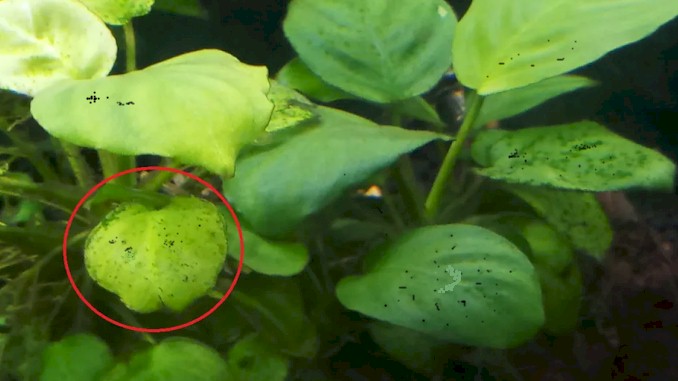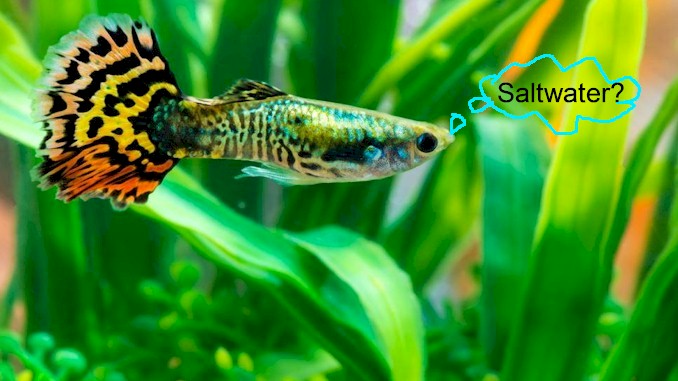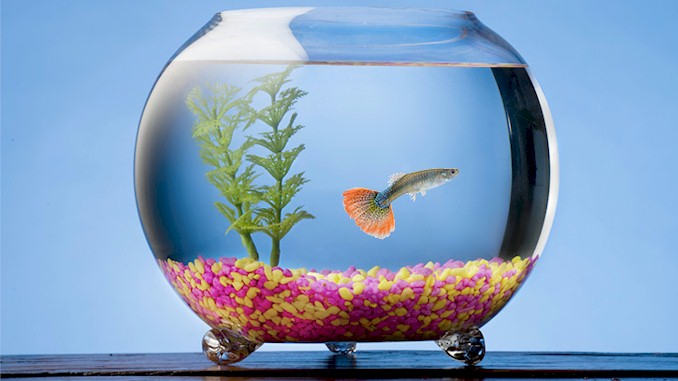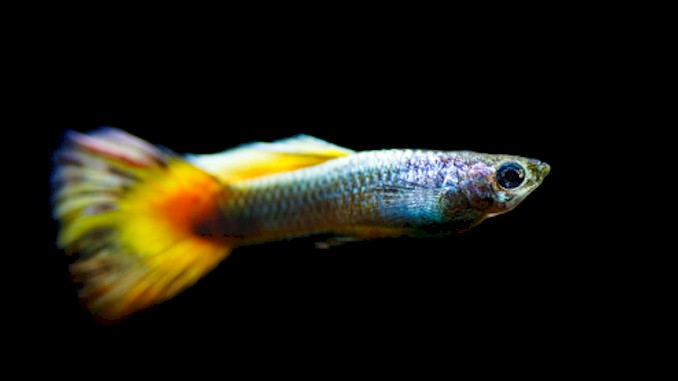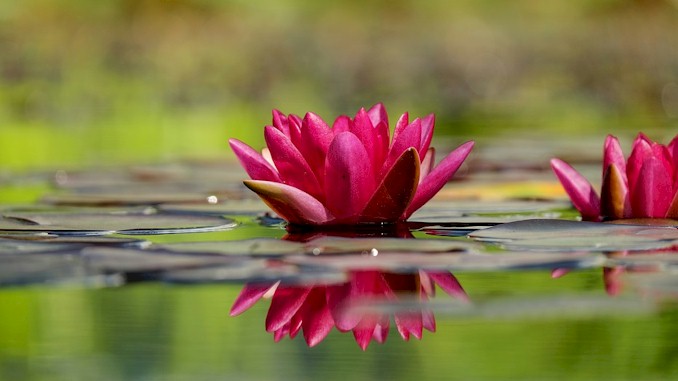Beginner’s Guide to Setting Up a Guppy Tank: Everything You Need to Know
If you’re about to get guppies, then one of the most important things to do is set up the tank properly. If you’re wondering how to set up a guppy tank, then wonder no more! Because you have come to the right place!
In this article we’ll talk about all the things you need to do in order to set up the perfect guppy tank!
What Size Tank Should You Use
Selecting the appropriate tank size is paramount before setting up your aquarium. Although your guppies can thrive in various tank sizes, there is a minimum requirement.
To ensure your guppies’ happiness and well-being, a tank no smaller than 5 gallons is recommended. It is important to allocate approximately 1.5-2.5 gallons of water per guppy, and a minimum of 3 guppies should be kept in a shoal.
Failure to adhere to this guideline will result in stressed and unhappy guppies. If you intend to introduce other aquatic creatures, it is crucial to consider their tank size requirements and acquire a suitable tank accordingly.
(You can check out my article about the tank mates for guppies with this link.)
| Guppy per Gallon | Gallons of Water |
| 2 guppies | 3 gallons |
| 3 guppies | 4 gallons |
| 4 guppies | 5 gallons |
| 6 guppies | 7 gallons |
| 7 guppies | 8 gallons |
| 8 guppies | 9 gallons |
| 9 guppies | 10 gallons |
And so on and so forth.
What Will The Tank Need
When you’re keeping tropical fish you’re going to need to make sure that the water remains clean, and warm. So the tank itself won’t be enough.
A Heater and Thermometer
As well as a tank, you’ll also need to buy a heater (this is a link to amazon). and a thermometer (this is also a link to amazon). This is because the temperature of the water in the tank needs to be between 72-78 degrees Fahrenheit. If the temperature is lower than 72 degrees Fahrenheit, your guppies will become sick. Some of the illnesses they might suffer from are:
- Fin rot
- Constipation
- Swim bladder disease
Luckily, if you buy a decent heater, it will consistently keep the tank’s temperature where it needs to be. And the thermometer will help you easily check that something hasn’t gone wrong.
In some cases, you may also need a fan to make sure that the tank’s temperature doesn’t become too hot.
A Filter
A filter is an essential piece of equipment for any tank owner, especially for those who keep guppies. These little fish require a clean and healthy environment to thrive, and a filter is a crucial tool to achieve this. Not only does it help remove debris and harmful chemicals from the tank, but it also supports the growth of beneficial bacteria that break down ammonia, a toxic substance that can harm your fish.
But the benefits of a filter don’t stop there. It also creates water movement in the tank, mimicking the natural flow of streams and rivers where guppies would typically reside in the wild. This water movement not only feels natural to your fish, but it also increases the surface area of the water, allowing for more oxygen to dissolve into the tank. Since guppies rely on oxygen to breathe, maintaining high levels of oxygen is essential for their health and well-being.
In addition to a filter, you may also want to consider an air bubbler to further increase the oxygen levels in your tank. With a filter and air bubbler, you can create a thriving and healthy environment for your guppies to live in.
You can buy a filter from amazon by clicking this link.
Decorations
Decorations are also essential as they’re going to keep your guppies entertained. Depending on what your tank looks like, there are so many different decorations to choose from.
However, just make sure you’re adding lots of decorations that give your guppies hiding places as well as lots of plants. Plants are going to help oxygenate the tank and make it feel more natural for your guppies.
When you’re choosing plants, you should choose some that will suit your guppy and make them happy. A few great plants include:
- Anubias Nana – This is a great plant that is composed of large leaves that your guppy can hide between and underneath. It also stays quite small, so it will have no problem growing in a 10-gallon tank.
- Duckweed – Floating plants are great for guppies because they help them to feel safe, and the roots also give them something to swim between. If you’re planning on keeping your guppy fry alive, then they’re also going to be a great hiding place for them while they’re growing. And if it ever grows out of hand, it’s incredibly low maintenance because you can just scoop some out.
Substrate
While it’s not essential, you should definitely add some substrate to your tank. The substrate will give your aquarium plants somewhere to their roots, as well as make the tank feel natural to your guppies.
The good thing about substrate is once you’ve put it in, you’ll never have to get rid of it. It will just sit at the bottom of your tank forever. However, you will need to use a gravel vacuum on it regularly to make sure it doesn’t become too dirty.
A Biological Supplement and Water Conditioner
When you’re first starting out, you’re going to want to add a biological supplement to your tank to help the beneficial bacteria grow faster. And you’ll also need a water conditioner every time you add new water to the tank to make it habitable for your fish.
You can buy a biological supplement from amazon by clicking this link.
Now that you know the basics, it’s time to set up your tank!
Wash the Tank and Check For Leaks
The first thing you should do is wash the tank, and while doing this, simultaneously check it for leaks. When you’re washing your tank, take it to the bath or outside and completely fill it with water.
Once you’ve done this, use a sponge on the inside to clean the glass. Just make sure you use the soft side, so you don’t scratch it.
While you’re doing this, you should also be keeping an eye out for any leaks. These will normally happen around the seams of the tank.
Now, this is the important part. Once you’ve cleaned the tank and checked for leaks, remove all of the water before moving your tank. If you try to move the tank while the water is still inside, then you could end up smashing the tank. So use a gravel vacuum or cup to get all of the water out.
Where Should You Place Your Tank
Next, you’ll have to decide where you’ll place your tank. Once your tank has been placed, it can be extremely hard, even impossible, to move it (especially with fish inside it).
There are a couple of things to remember when placing your tank. First of all, it’s often best to avoid places that are in direct sunlight. Direct sunlight is going to massively increase the amount of algae growth in the tank as well as potentially heat the tank up.
Carrying on from that, you should also make sure you’re placing the tank somewhere the temperature doesn’t fluctuate too much. This means avoiding places near the sun, as well as radiators, and anywhere with a draft.
The smaller the tank, the larger the temperature fluctuation will affect it.
Begin Decorating
Now it’s time for the fun part. It would be best if you began decorating your tank however you wish. If you’ve got substrate, then make sure you place it first before adding any plants and decorations that you want.
If you’re going to add plants to your tank, then you’ll need to use a spray bottle to keep them wet until you’re ready to fill the tank with water.
And if you do want to add substrate, then generally, around 1.5-2″ of the substrate is the normal amount.
Fill The Tank With Water
Now it’s time to fill your tank with water. If possible, you and someone else should use a hose to fill the tank, as this is the easiest way. However, if this isn’t possible, then a bucket will do as well.
When you’re filling your tank with water, don’t pour the water directly into the tank. Doing this will massively disturb the substrate and your decorations.
Instead, what you should do is use a plate or something similar and let the water glide off it.
Completing Your Aquarium Setup: Adding Equipment
Congratulations on your new aquarium! It’s time to add the final pieces of equipment that will ensure your aquatic pets thrive in their new home. The two essential components to add are the filter and the heater.
If you purchased an aquarium kit, there is likely a designated space for the filter and heater. However, if not, you have the flexibility to place them anywhere in the tank. The general recommendation is to position them towards the back of the tank.
Once you have decided on the placement of your filter and heater, it is time to add them to the tank. The filter will immediately start working, but the heater may take some time to warm up the water. It is crucial to add a thermometer to the tank at this point to ensure that the temperature is optimal for your aquatic pets.
By properly placing and installing the filter, heater, and thermometer, you are taking significant steps toward creating a healthy and balanced aquatic environment for your pets. Enjoy your new aquarium and the peaceful serenity it brings to your home!
To ensure the safety and health of your aquatic pets, it is essential to use a water conditioner to eliminate harmful chemicals from the water.
You can buy a water conditioner from amazon with this link.
Cycling Your Aquarium: Two Methods
One of the final steps in setting up your aquarium is cycling the tank. There are two methods for cycling a tank: fish-less cycling, which is recommended, and in-fish cycling.
Fish-less cycling involves allowing the beneficial bacteria to grow in the tank without any fish present. This is done by adding a source of ammonia, such as fish food or pure ammonia, to the tank. Over time, the bacteria will consume the ammonia and convert it into nitrite, and then into nitrate, creating a balanced ecosystem. This process typically takes three to four weeks.
In contrast, in-fish cycling involves adding fish to the tank immediately and relying on their waste to produce ammonia to feed the beneficial bacteria. This method can be stressful and harmful to the fish, and it is generally not recommended.
By cycling your tank properly, you can establish a healthy and stable environment for your aquatic pets to thrive in.
Perform a Fishless Cycle for Your Aquarium
One important step in setting up a new aquarium is the process of cycling, which establishes the biological filter needed to keep the tank environment healthy for your fish. While cycling can be done with fish in the tank, a fishless cycle is a safer option for your aquatic pets.
To begin a fishless cycle, add a biological supplement to your tank to encourage the growth of beneficial bacteria that will reduce ammonia levels. You can also add fish food to the tank, which will decompose and produce ammonia. This will allow the bacteria to grow without the need for fish in the tank.
You can buy a biological supplement from amazon by clicking this link.
During the 3-4 week process, ammonia levels will rise and fall rapidly, making it unsafe for fish to be in the tank. Be sure to test the water regularly during this time. Once the ammonia, nitrite, and nitrate levels have consistently remained low for a few days, the tank is ready for your fish.
By following these steps, you can establish a healthy and stable aquarium environment for your fish without putting them at risk during the cycling process.
In-Fish Cycle for Your Aquarium
In-fish cycling is another method of establishing the biological filter in your aquarium, but it comes with significant risks and is not recommended. This method involves adding fish to the tank immediately and allowing the bacteria to grow as the fish produce ammonia. However, this can be harmful to your fish as high levels of ammonia can cause illness or death.
If you choose to perform an in-fish cycle, it is crucial to have an ammonia detoxifier on hand in case the ammonia levels become too high. These detoxifiers convert harmful ammonia into harmless ammonium, which can still be used by beneficial bacteria to grow.
In addition to using an ammonia detoxifier, frequent water changes may also be necessary to maintain safe ammonia levels for your fish. You will also need to add a biological supplement to the tank to promote the growth of beneficial bacteria. Testing the water at least twice a day is also essential to ensure the ammonia, nitrite, and nitrate levels are within a safe range.
Overall, in-fish cycling is a stressful and potentially harmful process for your fish. It is always best to opt for a fishless cycle to establish a healthy environment for your aquatic pets.
You can buy an ammonia detoxifier from amazon by clicking this link.
Can Guppies Live In Saltwater
It is possible for guppies to live in saltwater, but this is not recommended. Guppies can tolerate up to 150% of seawater salinity.
Keep in mind that you should not put too much salt in the tank. Excess amounts of salt can damage your guppies’ kidneys, leading to their death.
If I were you, I’d definitely stick to freshwater instead of saltwater.
Can Guppies Survive in Tap Water?
While it is possible for guppies to survive in tap water, it is not ideal or recommended. Most tap water contains chlorine, which can be harmful or even deadly to guppies if present in high enough concentrations. However, if you need to temporarily house your guppies in tap water, there are steps you can take to make it safer for them.
One option is to use a water conditioner, which can neutralize the chlorine and other harmful chemicals in tap water. Another option is to let the tap water sit for a day or two to allow the chlorine to dissipate naturally. Alternatively, you can use a filtration system that removes chlorine and other contaminants from the water.
Overall, while guppies may be able to survive in tap water, it is best to provide them with a safe and healthy environment by using a water source that has been properly treated and tested.
Sand or Gravel Substrate: Which is Best for Your Aquarium?
Are you contemplating on what substrate to use for your guppy aquarium? While many aquatic enthusiasts opt for sand, there are alternatives to consider based on personal preferences. Gravel, larger rocks, and crushed coral are some viable options for those who are not inclined to use sand.
However, sand remains the top pick for most hobbyists, including myself. This is because gravel can be rough on guppies and cause harm to their delicate fins due to its coarseness. On the other hand, sand provides a soft and smooth surface that is gentle on the fish. Ultimately, the decision lies with the individual and their specific requirements for their aquarium.


